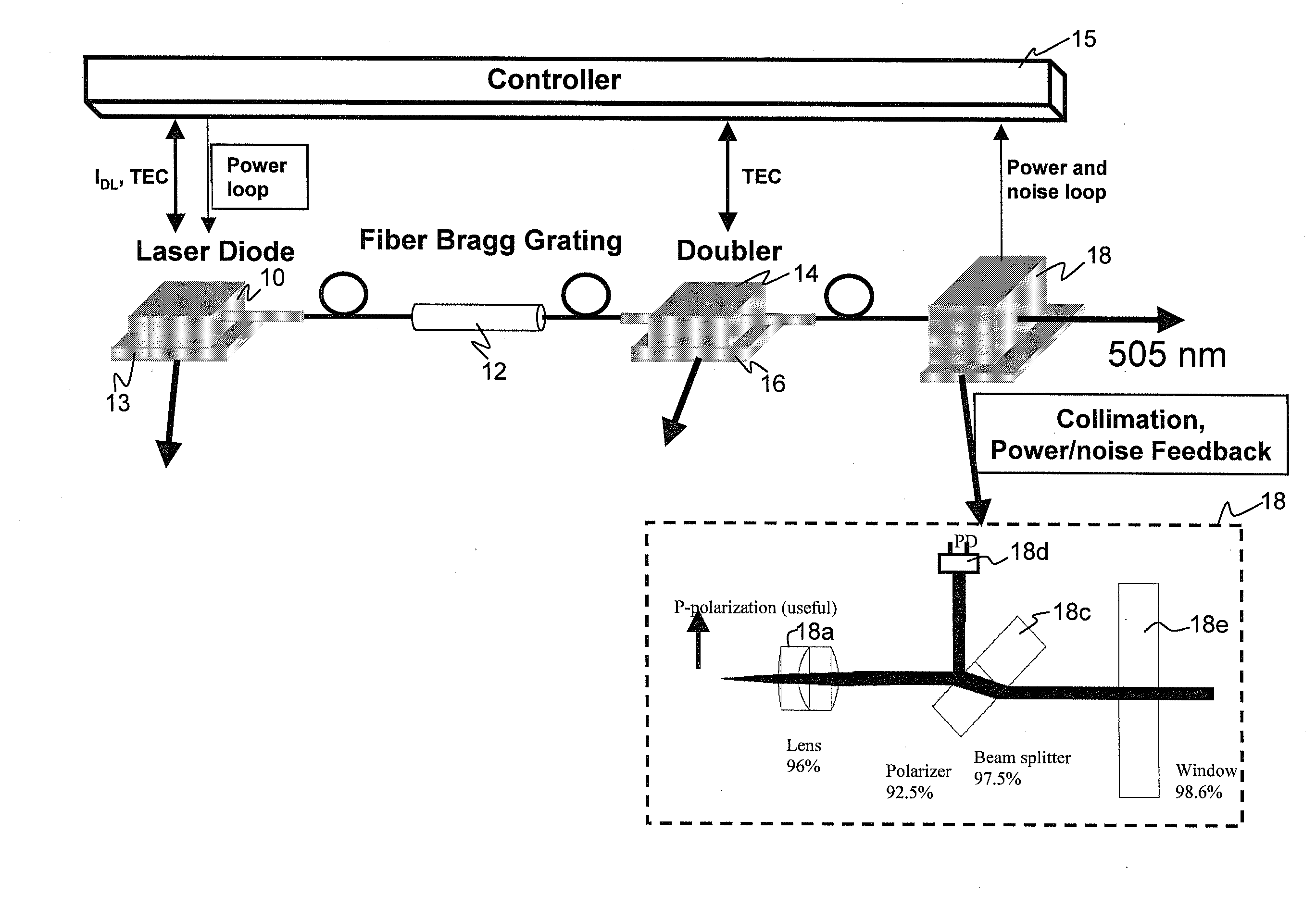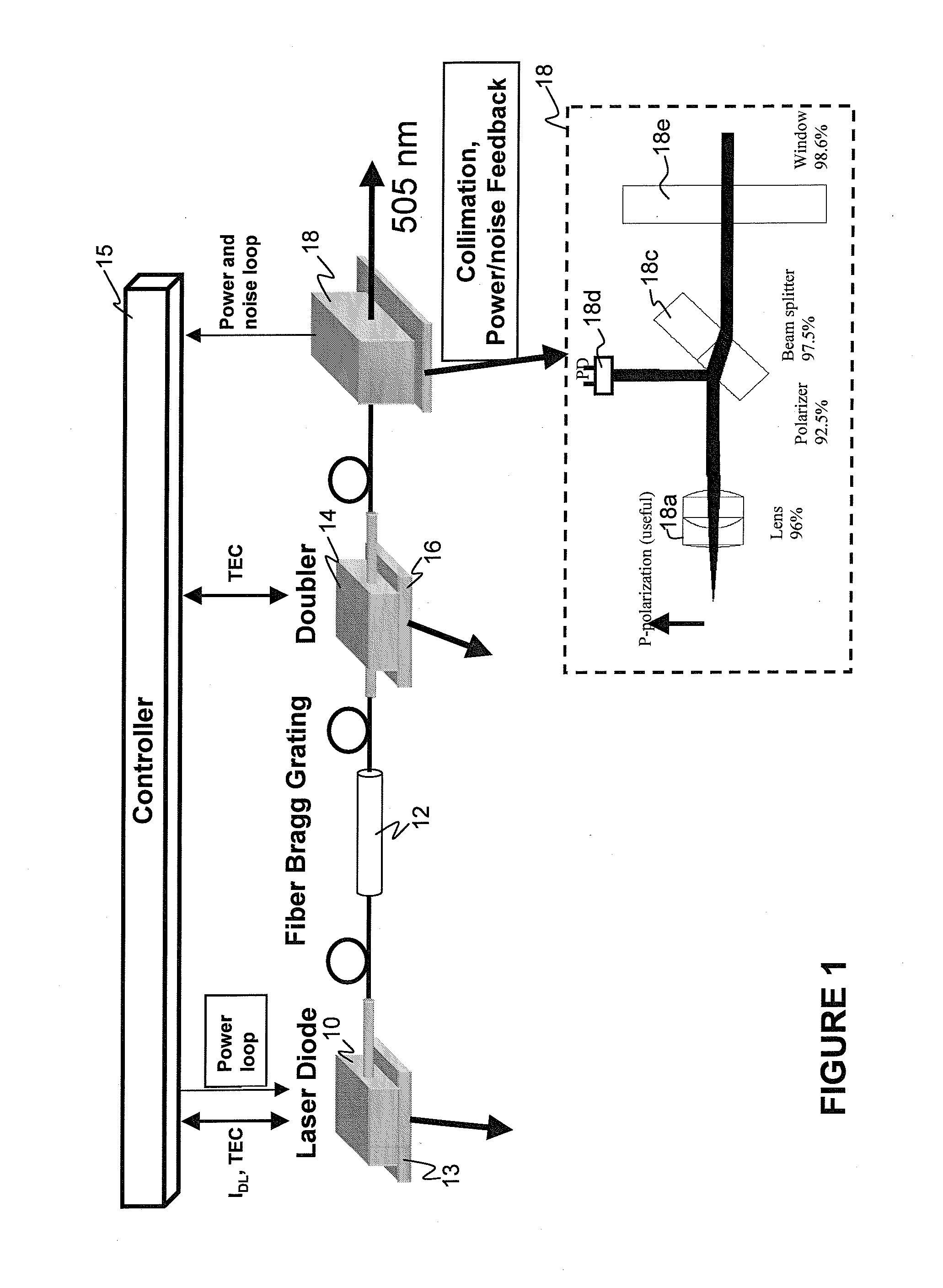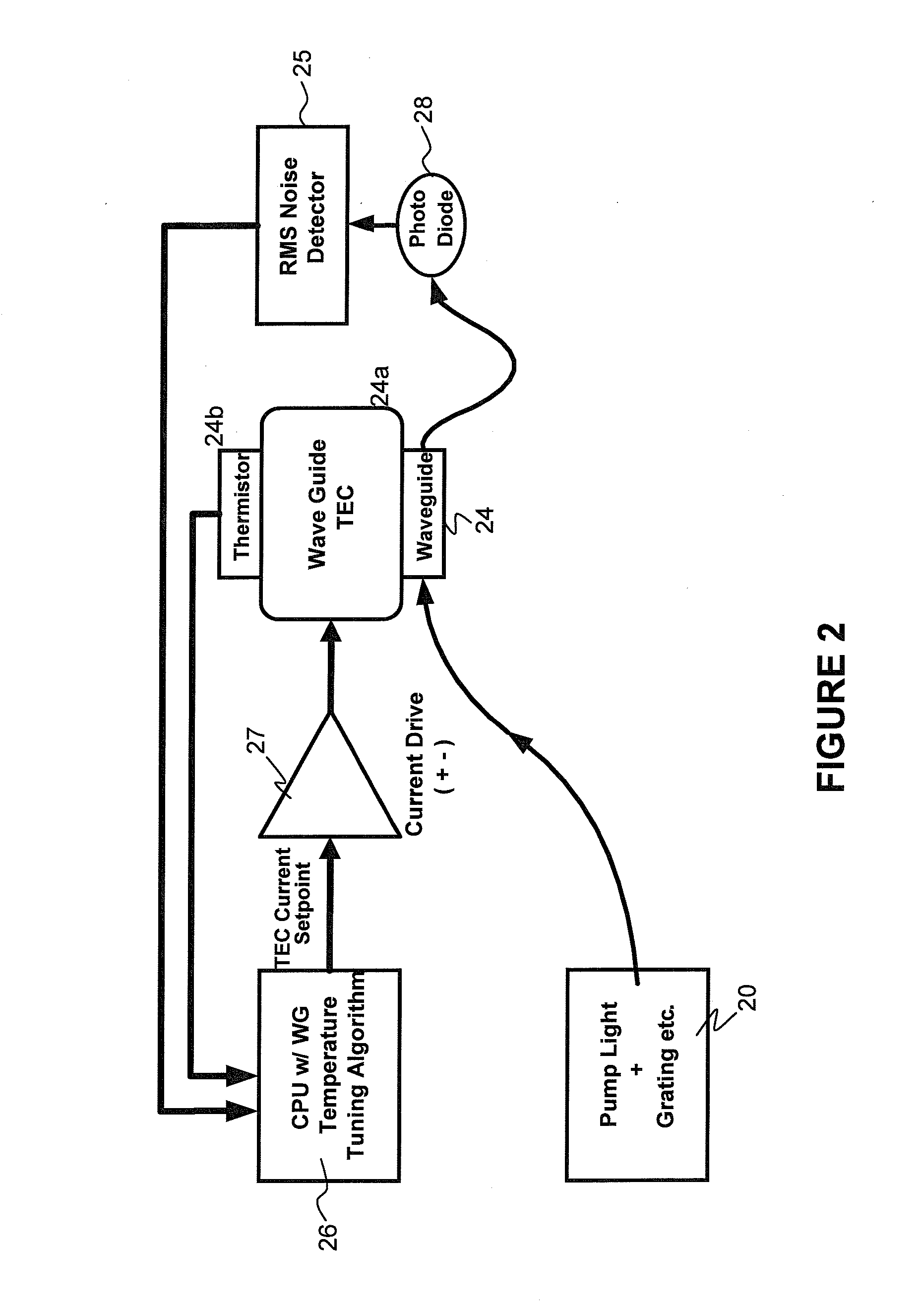Circuit And Method For Lessening Noise In A Laser System Having A Frequency Converting Element
a frequency converting element and circuit technology, applied in the direction of laser cooling arrangements, laser details, instruments, etc., can solve the problems of increasing noise, reducing power, and more complex cavity control, so as to reduce noise and lessen noise
- Summary
- Abstract
- Description
- Claims
- Application Information
AI Technical Summary
Benefits of technology
Problems solved by technology
Method used
Image
Examples
Embodiment Construction
[0042]Turning now to FIG. 1 a laser system for frequency doubling a laser generated signal having a predetermined wavelength λL is provided wherein the wavelength of the output frequency doubled converted signal is λ / 2. Although specific examples described hereafter refer to a frequency doubling system utilizing a passive waveguide frequency doubling crystal, other frequency converting elements and devices may be utilized.
[0043]In FIG. 1 a laser diode 10 is shown having controls signals provided by a controller 15 for controlling a thermoelectric cooler (TEC) 13 for maintaining the laser diode at a controllable operating temperature and constant power. Current IDL is varied so as to ensure the power in the laser diode is maintained at a constant value as the temperature of the circuit changes and as the laser ages. A fiber Bragg grating 12 is positioned along a path within an optical fiber optically coupling the laser diode 10 output signal to an input of a frequency doubling crysta...
PUM
| Property | Measurement | Unit |
|---|---|---|
| wavelength | aaaaa | aaaaa |
| wavelength | aaaaa | aaaaa |
| temperature | aaaaa | aaaaa |
Abstract
Description
Claims
Application Information
 Login to View More
Login to View More - R&D
- Intellectual Property
- Life Sciences
- Materials
- Tech Scout
- Unparalleled Data Quality
- Higher Quality Content
- 60% Fewer Hallucinations
Browse by: Latest US Patents, China's latest patents, Technical Efficacy Thesaurus, Application Domain, Technology Topic, Popular Technical Reports.
© 2025 PatSnap. All rights reserved.Legal|Privacy policy|Modern Slavery Act Transparency Statement|Sitemap|About US| Contact US: help@patsnap.com



